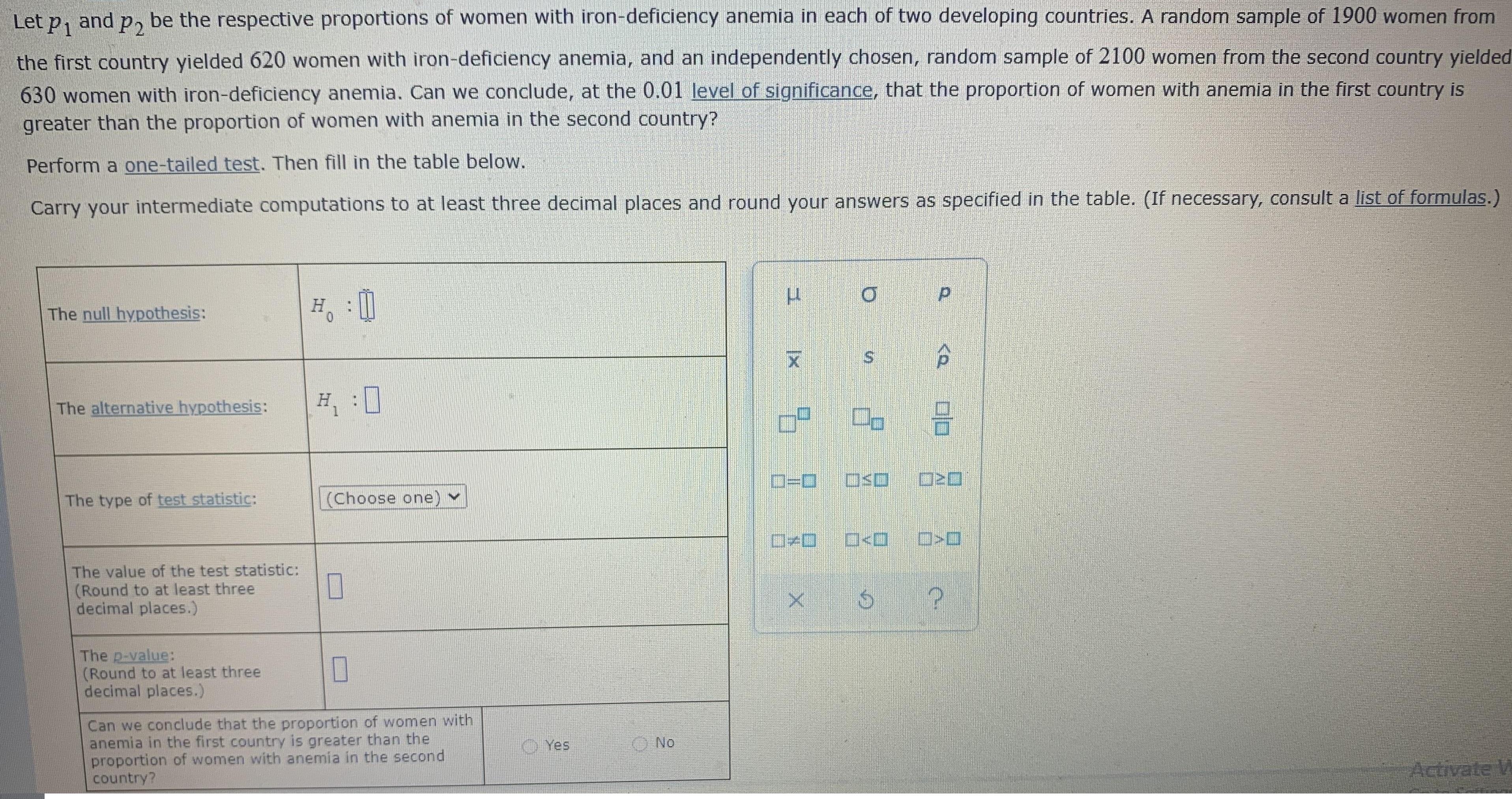Answered step by step
Verified Expert Solution
Question
1 Approved Answer
Let p, and p, be the respective proportions of women with iron-deficiency anemia in each of two developing countries. A random sample of 1900

Let p, and p, be the respective proportions of women with iron-deficiency anemia in each of two developing countries. A random sample of 1900 women from P2 the first country yielded 620 women with iron-deficiency anemia, and an independently chosen, random sample of 2100 women from the second country yielded 630 women with iron-deficiency anemia. Can we conclude, at the 0.01 level of significance, that the proportion of women with anemia in the first country is greater than the proportion of women with anemia in the second country? Perform a one-tailed test. Then fill in the table below. Carry your intermediate computations to at least three decimal places and round your answers as specified in the table. (If necessary, consult a list of formulas.) The null hypothesis: H S. The alternative hypothesis: H. D: D=D OsD The type of test statistic: |(Choose one) The value of the test statistic: (Round to at least three decimal places.) The p-value: (Round to at least three decimal places.) Can we conclude that the proportion of women with anemia in the first country is greater than the proportion of women with anemia in the second country? Yes O No Activate W 1x
Step by Step Solution
★★★★★
3.47 Rating (157 Votes )
There are 3 Steps involved in it
Step: 1

Get Instant Access to Expert-Tailored Solutions
See step-by-step solutions with expert insights and AI powered tools for academic success
Step: 2

Step: 3

Ace Your Homework with AI
Get the answers you need in no time with our AI-driven, step-by-step assistance
Get Started


